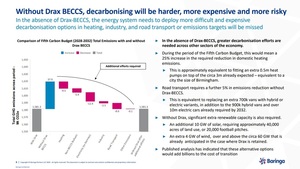UK seeks comments on low-carbon hydrogen strategy
Energy Disrupter
ADVERTISEMENT
The U.K. government on Aug. 17 published a report that identifies and compares options for a standard to define “low-carbon hydrogen.” It provides lifecycle greenhouse gas (GHG) estimates for a variety of hydrogen production pathways, including those focused on biomass and biogas.
In general, biomass and biogas pathways with carbon capture and storage (CCS) evaluated in the study achieved significant carbon-negative results, while biomass pathways without CCS still achieved low overall production GHG emissions. The report, however, recommends that a low-carbon hydrogen standard include an evaluation of direct land use change for biomass and address biomass sustainability criteria.
The report informs the contents of a public consultation focused on the design of a U.K. low carbon hydrogen standard opened on Aug. 17 by the U.K. Department for Business, Energy and Industrial Strategy. As part of that public consultation, the agency is seeking public comments on design options for the standard.
According to the BEIS, the U.K. aims to have 5 gigawatts (GW) of low carbon hydrogen production capacity in place by 2030. Currently, nearly all hydrogen production in the U.K. is derived from fossil fuels. To meet the country’s carbon budget and net zero commitments, there needs to be a switch to low-carbon hydrogen production methods.
The consultation addresses the methodology for calculating GHG emissions associated with hydrogen production and the development of a subsequent GHG emissions threshold against which different low-carbon production pathways would be measured.
The public consultation period is open through Oct. 25. Additional information is available on the BEIS website.
















